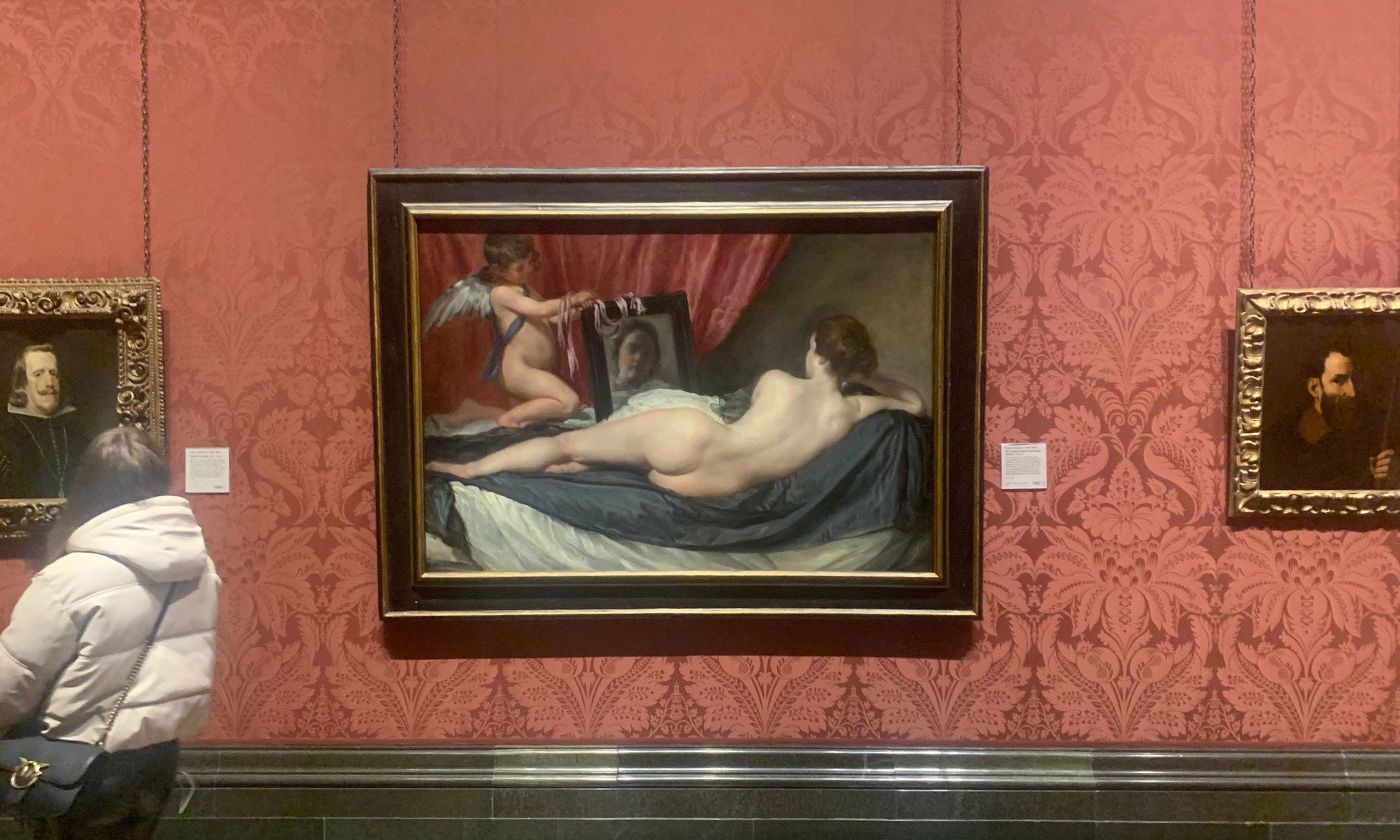Diego Velázquez, The Toilet of Venus (1647-51), back on show at the National Gallery, London, today after rehanging. It was removed from the gallery for conservation on 6 November after being attacked by climate activists © The National Gallery, London. Courtesy The National Gallery
Diego Velázquez's The Toilet of Venus, widely known as 'The Rokeby Venus', has gone back on show at the National Gallery in London, just under four weeks after it was removed from display for conservation following an attack with hammers by climate activists from the pressure group Just Stop Oil on 6 November.
In a statement, a spokesperson for the National Gallery said "'The Rokeby Venus' was returned to display on Friday 1 December after conservation treatment to minor damage sustained to the painting surface, and the fitting of new glazing. We are delighted to have her back on display."
On 6 November a spokesperson for the National Gallery said in a statement: “At just before 11am this morning [6 November 2023] two people entered Room 30 of the National Gallery. The pair appeared to strike The Toilet of Venus (“The Rokeby Venus”) (1647-1651) by Velázquez with what appeared to be emergency rescue hammers.”
The Toilet of Venus, one of the gallery's greatest treasures, stands out for its daring subject as the only surviving female nude by Velázquez, the master of oils both in his touchingly human and direct genre pictures and his supremely insightful portraits of Spanish grandees and the Spanish royal family. Like Velazquez's matchless and near-contemporaneous portrait of Pope Innocent X (c1650) in the Doria Pamphilj collection in Rome—the imaginative driver for some of Francis Bacon's most powerful paintings—the Venus has come to be an ideal subject for appropriation by contemporary artists, as a symbol of feminine beauty or a challenge to the artist's gaze, of how a painter sees and is seen.
The painting is due to be lent to the Walker Gallery in Liverpool in May 2024 as part of NG200, the National Gallery's celebrations of its 200th anniversary.
The painting was famously attacked by the suffragette Mary Richardson on 10 March 1914, leaving the painting severely damaged, after Richardson cut eight gashes in the canvas with a meat cleaver—some longer than others and all in the area depicting the hour-glass-shaped back of the reclining figure of a naked Venus, the goddess of love—leaving the picture in need of repair, restoration and relining with a backing canvas.
Richardson’s assault on the Venus, she said, was a protest against the treatment of the women's suffrage leader Emmeline Pankhurst, who had been arrested the previous day. “I have tried to destroy the picture of the most beautiful woman in mythological history," Richardson told police after the attack, "as a protest against the government for destroying Mrs Pankhurst, who is the most beautiful character in modern history."
The painting had previously made headlines at the time of its acquisition by the gallery in 1906 following a successful campaign led by the fledgling National Art Collections Fund (NACF, now Art Fund) to raise the then enormous sum of £45,000 to enable the charity to buy the painting for the gallery, which duly became its owner in March 1906.

